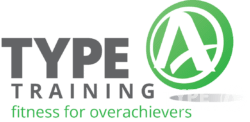Your daily routine in Manhattan probably means long hours hunched at a desk, squeezing through packed subway cars, and juggling the pace of city life. All that repetition and those static positions? They set you up for the same muscle tightness and weakness that millions of New Yorkers deal with.
Recognizing the signs of common muscular imbalances is the first step to feeling better.
Doesn’t matter if you’re a Wall Street exec with a stiff neck or a Chelsea local with cranky hips—these aches usually boil down to common muscular imbalances.

Popular posts:
Corrective exercises target specific muscle imbalances to restore proper movement patterns and stop pain before it becomes a constant thing. Unlike cookie-cutter workouts, these moves zero in on the real problem—those sneaky dysfunctions that make your body compensate in weird ways. When some muscles do all the work and others slack off, your body starts adapting, but not in a good way.
Getting a handle on which imbalances mess with you the most—and how to fix them—can totally change your day-to-day. Think about those rounded shoulders you see in Midtown offices or the tight hips that haunt Upper East Side commuters. Spotting and dealing with these patterns really matters for staying healthy and mobile in this city.
Key Takeaways
-
- Muscle imbalances usually happen because of daily routines like sitting at a desk or commuting, which create tight spots and weak points.
- Corrective exercises go after these specific trouble areas to help you move better and keep pain from sticking around.
Working on common muscular imbalances can lead to noticeable improvements in how you feel.
- If you pay attention and work on these imbalances, you can seriously boost your comfort and health.
Understanding Common Muscular Imbalances
Understanding common muscular imbalances is essential for long-term health.
Understanding common muscular imbalances is vital for preventing pain and improving overall movement quality.

Muscle imbalances show up when certain muscles get stronger or tighter than the ones that are supposed to balance them out. This throws off your posture and the way you move.
Awareness of common muscular imbalances can empower you to take charge of your health.
Common muscular imbalances can lead to chronic pain and limit your physical performance if not addressed.
It’s especially common for Manhattan folks who clock long hours at desks or hustle through the city’s chaos.
What Are Muscle Imbalances?
By addressing common muscular imbalances, you can enhance your daily activities.
Muscle imbalances pop up when opposite muscle groups aren’t pulling their weight equally. Your body likes things balanced—otherwise, movement gets awkward.
If one muscle group tightens up and its opposite gets lazy, you end up with a chain reaction that messes with how you move.
Some typical patterns:
-
- Anterior dominance: Your front muscles overpower your back.
Common muscular imbalances: Many people experience these issues, especially in urban settings.
- Lateral imbalances: One side of your body is stronger.
- Upper cross syndrome: Tight chest/neck, weak upper back.
- Lower cross syndrome: Tight hips/lower back, weak glutes/core.
Midtown office workers and Upper East Siders with forward head posture? Classic examples.
Causes of Muscular Imbalances
Sitting too much, repeating the same moves, and sloppy exercise form are big culprits. Manhattan’s rush makes these patterns almost predictable.
Recognizing common muscular imbalances can improve your athletic performance.
Being aware of common muscular imbalances can help you take proactive steps towards better posture.
Lifestyle stuff that leads to imbalances:
Recognizing common muscular imbalances can be the first step in addressing them effectively.
| Cause | Effect | Common in NYC |
|---|---|---|
| Prolonged sitting | Tight hip flexors, weak glutes | Financial District pros |
| Computer work | Forward head, rounded shoulders | Chelsea, SoHo creatives |
| Repetitive motions | Overuse of some muscles | Commuters, athletes |
| Past injuries | Compensating movements | Everyone |
Bad posture, too many push-ups, and endless laptop time tighten your chest and weaken your upper back. Tribeca and West Village folks working from home know the drill.
Your body adapts to whatever you do most. Eight hours hunched at a laptop? Your muscles will set up shop in that position.
How to Identify Muscle Imbalances
Pros use special tests to spot imbalances—think posture checks and muscle activity assessments. You can catch a lot of these at home with some quick self-checks.
Identifying common muscular imbalances early can save you from more serious issues.
Visual clues:
- Head juts out in front of your shoulders
- Shoulders round forward or sit unevenly
- Big curve in your lower back (hello, anterior pelvic tilt)
- Hips or shoulders at different heights
- Feet turn out when you walk
Simple movement tests:
- Overhead reach: Can’t get your arms up? Chest might be tight, upper back weak.
- Single-leg balance: Wobbly? Glutes and core could be slacking.
- Deep squat: Can’t get low? Tight hips, weak glutes.
Pain is a big hint, too. Lower back pain often comes from tight hips and weak glutes, while neck pain usually means your head is poking forward.
A lot of New Yorkers say these issues flare up when work stress keeps them glued to their desks with bad posture.
Those suffering from common muscular imbalances often find relief through targeted strategies.
Most Frequent Muscular Imbalances and Their Impact
Upper crossed syndrome messes with your neck and shoulders. Lower crossed syndrome throws off your pelvis and low back. Tight hips and cranky shoulders pile on more movement issues, making even simple stuff feel awkward.
Experiencing common muscular imbalances can significantly hinder your mobility and strength.
Upper Crossed Syndrome and Rounded Shoulders
Upper crossed syndrome is that classic forward-head look, especially in office workers glued to screens. Your chest gets tight, upper back gets weak, and your shoulders start creeping forward.
What it looks like:
- Head pokes forward
- Shoulders round in
- Tight chest and neck
- Weak upper back
Nearly every Midtown or Financial District office worker deals with this at some point. You might feel neck pain, headaches, or find it tough to look up.
What you might notice:
- Stiff, achy neck
- Pain between your shoulder blades
- Headaches
- Can’t move your arms like you used to
A Movement Assessment NYC pro can spot these issues early. If you ignore it, chronic pain can start messing with your workouts or even just carrying groceries.
Lower Crossed Syndrome and Anterior Pelvic Tilt
Lower crossed syndrome means your hip flexors are too tight and your glutes and abs are too weak. This tips your pelvis forward and exaggerates the curve in your low back.
Sitting all day—whether on the subway or at a Chelsea startup—tightens those hips. Your glutes get lazy, and suddenly your whole lower body feels off.
Main imbalances:
- Tight: Hip flexors, lower back
- Weak: Glutes, deep abs
This tilt changes how you walk and stand. You get lower back pain, maybe some hip aches, and your posture takes a hit.
Everyday struggles:
-
- Achy lower back
- Stiff hips
- Slouchy posture
- Less athletic power
Those dealing with common muscular imbalances often find relief through targeted exercises.
A Corrective Exercise Specialist Manhattan can help you fix these with the right stretches and strength moves.
Limited Hip Mobility and Lateral Pelvic Tilt
Tight hips force your body to compensate. If one hip is tighter, you might end up with a lateral pelvic tilt—one hip sits higher than the other.
This often sneaks up on people who always carry a bag on one side or who lean on one leg. Upper East Siders who commute a lot or walk everywhere? They’re prime candidates.
Why it happens:
- Always carrying a bag on one shoulder
- Leg length differences
- Old injuries
- Walking on uneven streets
A tilted pelvis throws off your spine and can stress your knees and ankles. Maybe you notice one shoe wears out faster or you feel off-balance on one leg.
What it leads to:
- Weird walking patterns
- Knee pain
- Sore lower back
- Trouble balancing
Hip mobility work plus some strength training can help reset your alignment.
Rotator Cuff and Shoulder Impingements
Rotator cuff issues lead to shoulder impingement, where your shoulder joint feels jammed. Suddenly, reaching overhead or lifting things gets painful.
Typical muscle trouble:
- Tight: Chest, front shoulders
- Weak: Rotator cuff, rear shoulders
This often comes from too much overhead work or bad posture. SoHo and Tribeca folks who spend hours on laptops and then hit the gym for endless bench presses? Yeah, this is for you.
Red flags:
- Pain reaching up
- Stiff shoulders
- Weakness lifting stuff
- Nighttime pain
An Injury Prevention Specialist Manhattan can spot these problems early. Your rotator cuff keeps your shoulder stable, and if it’s weak, your shoulder feels shaky.
Shoulder impingements make overhead moves tough and can seriously mess with your sleep. Catching it early and doing the right exercises makes a big difference.
Consequences of Untreated Muscle Imbalances
Managing common muscular imbalances effectively can lead to improved posture and performance.
Ignoring common muscular imbalances can lead to long-term health complications.
If you ignore muscle imbalances, things snowball. Your posture gets worse, injury risk shoots up, and you end up moving less and feeling older than you are.
Effects on Posture and Movement
Imbalances totally mess with your alignment and how you move. Tight muscles pull you out of whack, and weak ones can’t pull you back.
Forward head posture shows up when your chest is tight and upper back is weak. You get that hunched look that’s everywhere in Midtown.
Rounded shoulders go hand-in-hand, making you look shorter and feel less confident. Your shoulders roll in, chest pulls them forward, and your upper back can’t keep up.
Anterior pelvic tilt happens when you sit too much—think subway rides or desk work. Your pelvis tips forward, your lower back arches too much, and your spine pays the price.
The effects of common muscular imbalances extend beyond discomfort; they can impact overall well-being.
Ignoring these imbalances changes how you walk, run, or even just reach for stuff. Your body starts moving in weird ways, and the longer it goes, the tougher it is to fix.
Movement gets less smooth. Even picking up a bag or reaching for a shelf can feel awkward—or worse, hurt.
Injury Risk and Chronic Pain
Imbalances weaken your body’s support system, making you more likely to get hurt or develop nagging pain. When muscles don’t work together, you lose stability and shock absorption.
Lower back pain pops up when your glutes are weak and hip flexors are tight. Your back muscles end up doing extra work, which leads to soreness.
Knee pain often comes from weak hips and bad movement patterns. If your glutes don’t fire, your knees take the hit—especially on those endless city stairs.
Shoulder impingement is more likely when your back muscles are weak and chest is tight. Your shoulder blades don’t move right, and soft tissue gets pinched.
Imbalances make injuries more likely by forcing your body to move in ways it just wasn’t built for. That extra strain adds up.
Engaging in regular exercise can help mitigate the effects of common muscular imbalances.
Chronic pain tends to sneak up on you. What starts as a twinge can turn into pain that messes with your sleep, mood, and energy. And honestly—who needs that?
Reduced Athletic and Physical Performance
Muscle imbalances can seriously limit your power, endurance, and overall movement skills. Whether you’re a weekend warrior in Central Park or a dedicated athlete training in SoHo, these imbalances just slow you down.
Power generation takes a hit when your muscles don’t work well together. Weak glutes and tight hip flexors make it tough to transfer force from your legs through your core, especially in stuff like sprinting or jumping.
Movement efficiency drops because your body wastes energy trying to compensate for those imbalances. You’ll probably tire out faster during workouts and even regular daily stuff.
Coordination and balance go downhill if your stabilizing muscles aren’t doing their job. That can mess with your tennis game in Tribeca or just make it tricky to navigate packed Upper East Side sidewalks.
Muscle imbalances can hinder performance and increase injury risk by throwing off your body’s timing and coordination. Your nervous system has a hard time syncing up muscles when they’re not at the right length or strength.
If you hit the gym, imbalances can keep you from lifting heavier or nailing complex moves safely. You might hit a plateau because your body can’t handle more load with those basic movement patterns out of whack.
Corrective Exercise Strategies for Restoring Balance
Corrective exercises are crucial for overcoming common muscular imbalances and restoring balance.
A solid corrective exercise program starts with good assessment, then focuses on strengthening, mobility, and stuff like myofascial release. These strategies are especially useful for Manhattan pros who spend long hours at desks or hustling through NYC.
Assessment and Role of Physical Therapists
A good physical therapist will check your movement patterns to spot your specific imbalances. They’ll watch how you walk, squat, and do everyday things that fit your Upper East Side or Midtown routine.
Key Assessment Components:
- How you stand and sit (posture)
- How you move during basic exercises
- Joint flexibility
- Which muscles fire up (and which don’t)
Physical therapists use special tools to measure joint angles and muscle strength. They pay attention to those sneaky compensations you pick up from lugging bags through Chelsea or climbing subway stairs.
Corrective Exercise Specialists look at movement patterns to spot which muscles are overactive or underactive. That info shapes your custom plan.
The whole assessment usually takes 45-60 minutes. Your therapist will jot down what they find and set a starting point to track your progress.
Strength Training and Targeted Exercises
Strength training targets weak muscles that mess with posture and movement. Your plan zones in on muscle groups you actually need to strengthen, based on your assessment.
Priority Strengthening Areas:
- Glutes: Sitting all day makes them sleepy
- Core stabilizers: Keep your spine safe
- Upper back: Fights forward head posture
- Hip stabilizers: Help with walking and stairs
Corrective exercises focus on restoring proper movement patterns instead of just piling on weight. You start with simple activation, then move to more functional stuff.
Single-leg moves are great for balance and fixing left-right differences. Controlled squats and deadlifts teach you how to move safely when picking up groceries or whatever.
Implementing corrective strategies can help address common muscular imbalances effectively.
Your strength routine can fit a busy Financial District schedule. Short, focused sessions get the job done without eating up your whole day.
Mobility and Flexibility Techniques
Mobility work gets your muscles ready for strengthening and helps you move better. It’s key for tackling stiffness from sitting or repetitive postures.
Essential Mobility Areas:
- Hip flexors (tight from sitting)
- Thoracic spine (rounded from screens)
- Shoulders (slouching forward)
- Ankles (tight from
shoes )
Dynamic stretching gets your body ready to move. Instead of just holding a stretch, you move through a full range.
Mobility drills focus on the specific tight spots found during your assessment. Your therapist will show you stuff you can do at your SoHo desk or Tribeca apartment.
Mobility exercises should come before strengthening, so your muscles fire up the right way. That helps you avoid bad habits during exercise.
A quick mobility routine just takes 10-15 minutes a day. You can fit it in before work or squeeze it into a lunch break.
Implementing Myofascial Release and Foam Rolling
Foam rolling can be an effective way to address common muscular imbalances between sessions.
Myofascial release helps loosen up muscle tension and improves how your tissues feel. Foam rolling is a kind of self-massage you can do between therapy sessions.
Foam Rolling Targets:
- IT band (side of thigh)
- Quads (front of thigh)
- Thoracic spine (upper back)
- Calves (lower leg)
Roll slowly over tight spots for 30-60 seconds per muscle group. Use moderate pressure and hang out on those sore areas for a bit.
Self-myofascial release techniques help you loosen up before other corrective work. That way, your exercises actually stick.
Your foam rolling routine is perfect for small West Village apartments—barely takes up any space.
Addressing common muscular imbalances can improve your overall quality of life.
You can also use massage balls for more targeted pressure. They’re awesome for hitting those stubborn trigger points that mess with your movement.
Frequently Asked Questions
Common muscular imbalances can often be addressed with consistency and the right techniques.
Most Manhattan folks have questions about muscle imbalances from desk jobs, long commutes, and city life. Here are answers to the most common ones.
Learning about common muscular imbalances is key to prevention and recovery.
What are the typical symptoms of muscular imbalances?
You might notice pain in your lower back, shoulders, or knees when muscle imbalances start up. It’s especially common if you spend long hours at a Midtown or Financial District desk.
Your posture could shift—maybe one shoulder sits higher, or your head juts forward.
Some muscles feel tight and stiff, while others seem weak. That’s because some work overtime while others slack off.
Daily movements get harder. Turning your head or climbing subway stairs might feel uncomfortable.
A lot of people in Chelsea and SoHo say they get tired faster during workouts. It happens because your body has to work harder to move when things aren’t balanced.
What exercises can help correct muscle imbalances in the legs?
Single-leg exercises are your best bet for fixing leg imbalances. Stuff like single-leg squats, lunges, and step-ups strengthen weak muscles and promote symmetry.
Start with just your bodyweight. Add weights later if you want.
Single-leg deadlifts help your glutes and hamstrings while boosting balance.
Wall sits target your quads and help even out leg strength. Try holding for 30 seconds and build from there.
One-leg calf raises are great for fixing lower leg imbalances. They’re handy if you walk uneven city sidewalks every day.
Side-lying leg lifts hit those hip muscles that get lazy from too much sitting.
What steps should be taken to address arm muscle imbalances?
Start with single-arm moves like one-arm rows and chest presses. Each arm has to pull its own weight—literally.
Work your weaker arm first in every set. Match the reps with your stronger side so you don’t make things worse.
Resistance bands are awesome for this. They give steady resistance and help you control the weaker side.
Try push-ups with one hand higher than the other. Put your weaker arm on the lower surface so it works harder.
A lot of Tribeca folks find it helps to carry groceries or bags with their weaker arm. That little switch can make a difference over time.
How long is the recovery process for correcting common muscular imbalances?
Most people notice big changes in 4-8 weeks with consistent effort. It really depends on how bad the imbalance is and how often you work on it.
Minor desk-job imbalances usually get better in 4-6 weeks. If it’s more serious, or from old injuries or years of bad posture, it can take 8-12 weeks—sometimes longer.
Regular assessment can help identify common muscular imbalances before they become serious.
Working with a Movement Assessment NYC pro can help you progress faster. They’ll tailor a plan just for you.
Sticking with your routine matters way more than going super hard once in a while. Three or four sessions a week beats random intense workouts.
Addressing common muscular imbalances will help you move better and feel better.
Most Manhattan pros start feeling less pain in 2-3 weeks if they keep at it. Getting everything balanced takes a bit longer, though.
Can muscular imbalances lead to long-term health issues?
Absolutely—if you ignore muscle imbalances, things can get rough down the line. Muscle imbalances can hinder performance and increase injury risk if you don’t deal with them.
Chronic pain can develop in your back, neck, or joints. That can make daily life a hassle.
Your injury risk goes up a lot during sports or exercise. Weak muscles just can’t protect you from strains and tears.
All in all, understanding and correcting common muscular imbalances is essential for maintaining health.
Joints can start to hurt as your body compensates for those imbalances. Knees, hips, and shoulders end up taking extra stress.
Plenty of West Village residents report headaches from forward head posture. It happens when neck muscles get out of balance from staring down at screens all day.
Long-term neglect of common muscular imbalances can lead to chronic pain and discomfort.
What are some preventive measures to avoid developing muscular imbalances?
Take regular breaks from sitting every 30–60 minutes. Seriously, just stand up, stretch a bit, and move around—your muscles will thank you.
Regular movement can significantly reduce the likelihood of developing common muscular imbalances.
Set up your workspace so it actually works for you. Keep your computer screen at eye level, and make sure your feet rest flat on the floor.
Try mixing up your exercise routine. If you always stick to the same moves, some muscles get way more attention than others.
Don’t just train the muscles you like or the ones that feel easy. Give all your muscle groups a fair shot.
Strengthen your core muscles often. A strong core supports your whole body and helps you avoid weird compensations that mess with your balance.
Integrating strength training can help counteract common muscular imbalances.
If you’re in SoHo and you walk a lot, you’ll probably notice fewer imbalances than if you just ride the subway everywhere. Walking really does keep your legs balanced and strong.
To prevent common muscular imbalances, make sure to vary your exercises regularly.
Think about working with a Posture Correction Manhattan specialist. They can catch potential problems before they turn into something painful.
Consider consulting a professional for advice on managing common muscular imbalances.










